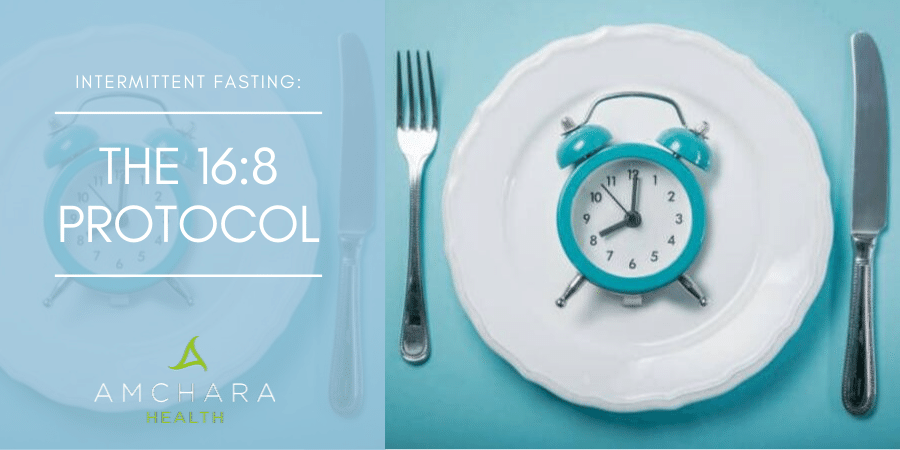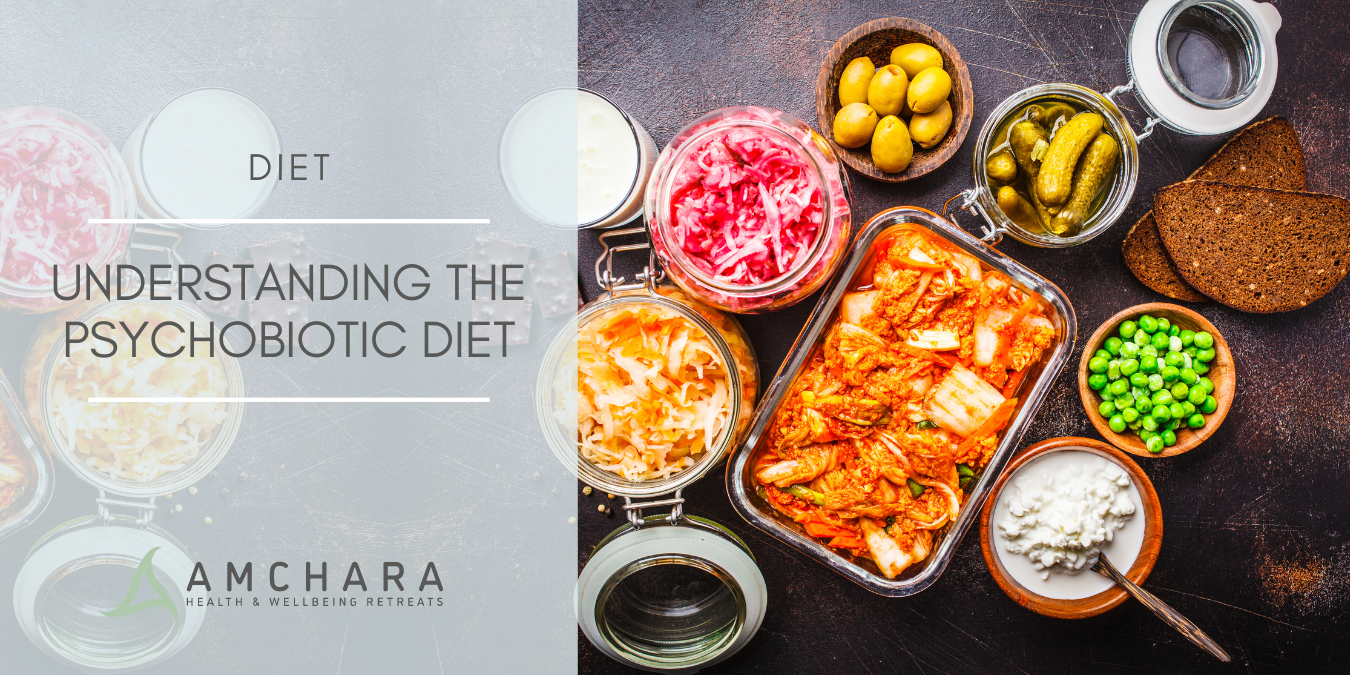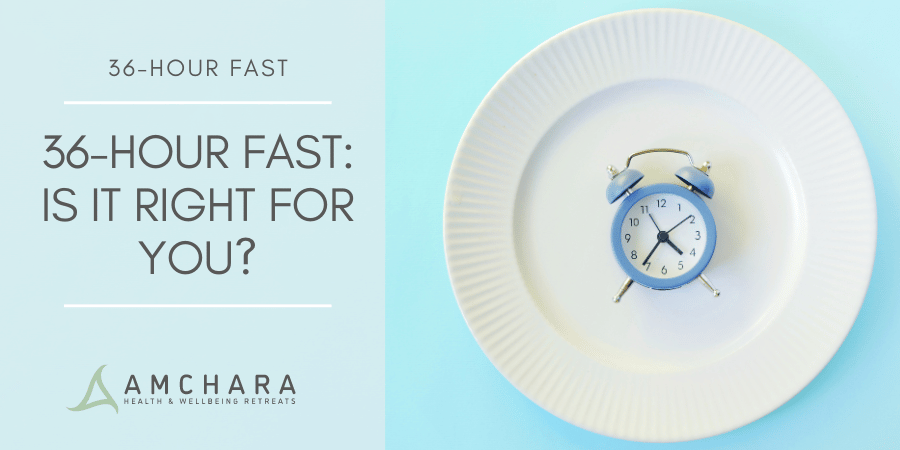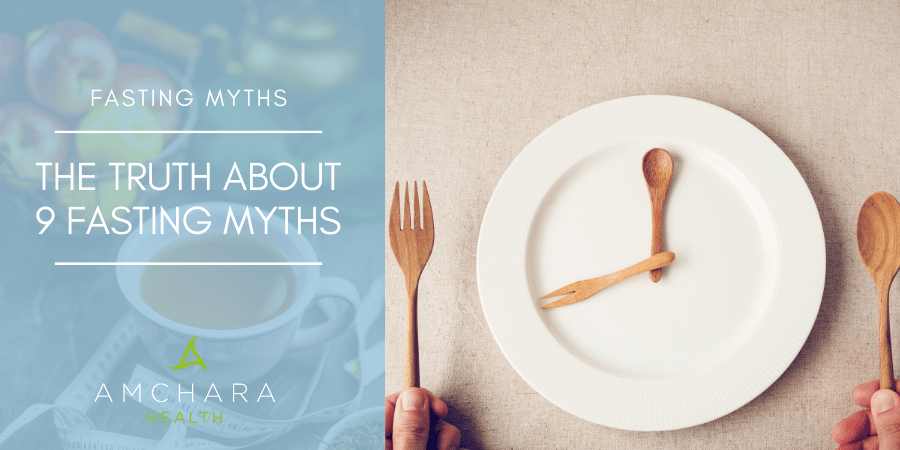Intermittent fasting is a hot topic these days.
Hardly a week passes without a new study linking fasting with a range of health benefits (1) and even longevity.
A variety of different types of fasting regimes have emerged as a result.
We always take an evidence-based approach and aim to provide you with actionable knowledge and tips to help you on your journey to optimal health.
In this article we’ll look at the 16:8 fasting protocol, the benefits connected with this type of fasting, whether it’s right for you and how to incorporate it into your life.
Why fasting?
Many people find the prospect of going without food for any length of time daunting if this is not a regular part of their religion or culture.
As a society we are constantly exposed to tempting images of food, available 24/7.
The importance of regular eating has been instilled in us from an early age.
Messages like ‘breakfast is the most important meal of the day’ and ‘eat little and often’ are commonly heard, even from nutritional experts.
So, what’s changed?
Society today is suffering from an epidemic of metabolic diseases.
Obesity, Type 2 diabetes, cardiovascular problems, high cholesterol and inflammation are increasing at an alarming rate.
At the heart of these problems lies nutrition, along with stressful, largely sedentary lifestyles.
These cause disruption to our insulin release and response. Insulin is the hormone that allows sugar (glucose) to be used as energy by the body or to be stored to be used in the future.
If we eat a diet rich in sugar and processed foods, insulin will be released repeatedly.
Eventually the receptors which should be responding to insulin’s message don’t respond, and a condition called insulin resistance will develop.
The body continues releasing insulin to try and get the receptors to respond.
The cells carry on not responding, insulin levels remain high, we feel fatigued, gain weight and Type 2 diabetes can be the result.
The answer to this?
Avoiding sugary foods and processed carbohydrates can help, as can always eating some protein and healthy fat with meals.
But it appears that constantly snacking throughout the day can still result in disordered insulin levels.
Fasting, on the other hand, has been shown to cause insulin levels to drop, and so over time can balance blood sugar levels and improve the sensitivity (2) of our cells to insulin.
Fasting – a time honoured tradition
Fasting has been practiced for thousands of years by everyone from philosophers to early medicine pioneers.
It forms a crucial part of almost every religion in the world.
Moses famously fasted for 40 days and 40 nights according to the Bible’s Old Testament.
Wild animals, especially carnivores, eat only a few times per week or less.
Throughout the evolution of mankind hunter gatherers ate intermittently, depending on food availability.
During our evolution, we would have had to function well without food both physically and mentally, sometimes for extended periods.
Fasting is a natural part of life even now. All of us fast for a certain number of hours each day.
Unless we routinely get up in the middle of the night and raid the fridge, we fast during the night. The word ‘breakfast’ is just this – we are breaking our overnight fast.
Even breakfast itself is a recent phenomenon.
Up until the 17th century, only manual labourers ate breakfast – and it was usually just a chunk of bread.
Just one or two meals per day was the norm, and it was considered sinful and gluttonous to eat breakfast.
Breakfast became fashionable in Victorian times as a sign of affluence, largely as a result of marketing campaigns designed to boost sales of breakfast cereals and even bacon.
All fasting is not alike
Through history, fasting has usually referred to water fasting – going without food for a number of days, with only water being taken.
Intermittent fasting restricts when food can be eaten.
Modified fasts allow a ‘normal’ eating pattern on some days, with calories being restricted on two or more days of the week.
This is the basis of the 5:2 diet, championed by Michael Mosley who reversed his type 2 diabetes using this method of eating.
Alternate day fasting, as its name suggests, allows eating on one day, with no food at all the following day.
The latest buzz is all about restricting eating to a specific time period each day, more properly called time restricted eating (TRE).
It’s gained popularity recently, mostly because it’s the easiest type of fasting to fit into a daily routine.
Your normal daily food intake is eaten within a short ‘eating window’.
You’ll then eat nothing – while drinking plenty of water – for a further period called the ‘fasting window’.
You can fast like this as often as you like, from once or twice per week to every day, depending on your goals and lifestyle.
What are the benefits of intermittent fasting?
Intermittent fasting not only may help shed excess weight, but it also appears to promote lean muscle.
When we are in the fed state, our body is dedicated to the processes of digestion, absorption and assimilation of nutrients, and does not generally burn fat for energy.
After around ten hours without food, blood sugar reduces and the body has more or less used up its temporary energy stores. It then turns to fat as an energy source.
Although many people connect intermittent fasting simply with weight loss, in recent years research has demonstrated it has wide-ranging health benefits.
These include reversal of Type 2 diabetes and insulin resistance, improvement of cardiovascular health, and reduction of metabolic syndrome.
When fat is burned for fuel, molecules called ketone bodies (3) are released which can protect brain function and memory (4).
Other studies have demonstrated not only weight loss but lower inflammation (5) and improved liver function with identical diets eaten during different time windows.
One hypothesis believes cells during fasting are under mild stress and they respond by adapting their ability to deal with that stress.
Although it might sound as though putting cells under stress is a negative thing, it’s a bit like exercise.
Exercise stresses the body, but providing we give our body enough time to recover, it leaves us stronger.
Much of the research on intermittent fasting has been carried out on rodents, but results from human studies are now emerging.
One study examined Ramadan fasting (6), in which subjects suffering from metabolic syndrome ate two meals per day with around 12 hours of fasting in between.
Researchers found this eating pattern led to reduced blood sugar levels and increased insulin sensitivity.
As an added bonus, fasting stimulates the body’s cleaning process, known as autophagy (7).
This is when worn out parts of cells are recycled, and waste products and toxins are removed.
If we are constantly eating our bodies don’t have a chance to carry out this essential process.
Fasting for weight loss
It appears our eating habits can lead to leptin resistance as well as insulin resistance.
Leptin, sometimes called the satiety hormone, reduces hunger.
If the receptors on our cells become resistant to leptin, we carry on feeling hungry all the time.
This can happen if leptin is constantly being released as a result of our preoccupation with grazing.
Fasting appears to reverse leptin resistance and so can actually reduce hunger.
Many people who try fasting for the first time are pleasantly surprised how few hunger pangs they experience.
The basics of intermittent fasting – the 16:8 protocol
The health benefits of abstaining from eating food for 16 hours may help to counteract many disease processes (8).
During this period, fat is burned for energy and cellular stress responses are stimulated.
Eating is restricted to an 8 hour time window.
However, common fasting periods range from 12 to 18 hours, and these still produce beneficial results.
When is it best to eat?
For most people increasing your fasting window will mean having an early dinner and then skipping breakfast the following day.
The beauty of intermittent fasting is you get to experiment with which fasting window is best for you.
It appears we have peripheral body clocks in our digestive system, liver, muscles and fat cells.
These respond to signals from our brain’s body clock.
While light determines our circadian rhythm, the timing of our food intake affects these peripheral body clocks (9).
For our ancestors, food was often scarce and usually eaten during daylight.
We now have artificial lighting around the clock and routinely eat food when it’s dark outside, so the two body clocks can become out of synch.
All this means it’s important to synchronise eating with our body clock.
Our individual genetics determines our individual circadian rhythm, so the right time to eat will be personal to you.
How to fast
According to First For Women, although at first it might sound a bit intimidating to go without food for 16 whole hours, it’s worth remembering that you’ll probably be spending about half that time sleeping.
Try going without food for 12 hours occasionally to discover if it suits you, before increasing to three to four times per week and gradually increasing the fasting window.
A typical eating pattern during the 16:8 protocol would be to have your evening meal at 7pm, then not to eat anything until 11am the next morning.
Or you could decide to eat between 9am and 5pm.
This allows for a healthy breakfast around 9am, a normal lunch around noon and a light early dinner at around 4pm.
The key is to eat healthy foods and eat regularly.
During the fasting window, you can drink calorie free beverages like herbal teas, and even unsweetened tea and coffee without milk.
Is fasting for me?
It should be noted very few studies on fasting have involved females.
Women do respond differently (10) to fasting, as our hormonal systems are designed to prevent us getting pregnant when food is in short supply.
More research is needed on this subject, however these systems appear only to kick in during extended periods of fasting.
Remember we are all unique and fasting may not suit everyone.
One study (11) looked at postmenopausal obese mice and discovered the 16:8 protocol led to rapid weight loss, better insulin sensitivity and increased physical activity.
What’s also interesting about this study is that the participants had exactly the same diet as other mice who had access to food 24/7, yet they still lost weight.
Other studies (12) have found the health benefits of intermittent fasting persisted even when study participants had unrestricted access to food for two days per week.
So it appears you can take the weekends off from your 16:8 fast without missing out on the benefits.
You can even schedule your intermittent fasting days around social commitments.
However, fasting is not recommended without consulting your GP if you are underweight, diabetic, pregnant, breastfeeding, or are suffering from low bow blood pressure, kidney disease or, cancer.
Takeaway message
If you’ve been curious about intermittent fasting, why not give it a try?
Perhaps you’re convinced longer-term fasting is not for you?
Time-restricted fasting is simple to fit into your daily routine.
It’s a positive step you can make towards reducing your waistline, and your overall health may benefit too.
As a further step along your fasting journey, a stay at an Amchara health retreat can help you along the road to great health.
Have you tried intermittent fasting? We’d love to hear your experiences, get in touch.
READ NEXT:









